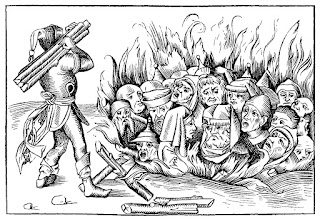The Siege of Gamla in 67 CE
October, 67 CE
Gamla, Judaea
The synagogue in Gamla is the earliest known synagogue in Israel. It is among a handful of ruined synagogues that pre-date the destruction of the Temple in 70 CE. It was Gamla's only public building. (Lee Levine, The Ancient Synagogue, 54)Gamla, Judaea
Gamla was one of the Jewish military strongholds during the Great Revolt. (Josephus, The Jewish War, IV:1-83) As the Roman army led by Vespasian and Titus approached the city, refugees from the countryside flocked there for protection. Lacking adequate housing, many of these asylum-seekers were housed in the synagogue. Remains of cooking equipment and fire pits were discovered by archaeologists, testifying to the situation during the siege. The townspeople fortified the synagogue as best they could, reinforcing the walls which also served as a section of the city's fortifications.
The area of the synagogue was one of the focuses of the Roman assault, with over 350 ballista stones uncovered in and around the building, even more than the number found where the town's wall was breached. Many arrowheads were also found in the synagogue. These remnants testify that the Roman army made a concerted effort to break into the synagogue and destroy the people within. (Dafna and Eran Meir, Ancient Synagogues in the Golan Heights)
As the Roman army advanced into the synagogue (i.e. the center of town), many Jews fled further up the mountain, where they would eventually kill their families and themselves. Others bravely "went to meet Titus and were without exception killed...There were heart-rending cries as men were slaughtered on every side, and the whole town was deluged with the blood that poured down the slopes." (Josephus, The Jewish War, IV:83)
This earliest example of a synagogue massacre highlights the importance of the synagogue as the main public building in a Jewish town. Very often, massacres took place in synagogues not because of their religious function, but rather because of their civil function as a place where Jews could congregate. In Gamla, the synagogue may have been targeted as a place where the revolt was fomented, but it was also just the place where there was room to house refugees. Today, one is as likely to find Jews being attacked in JCCs, Chabad houses, and kosher supermarkets, as these are also places where Jews congregate. However, for much of history, the synagogue was the only option for Jews to assemble.


Comments
Post a Comment